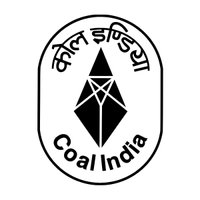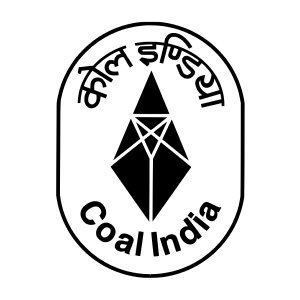
Coal India Ltd
NSE:COALINDIA


| US |

|
Johnson & Johnson
NYSE:JNJ
|
Pharmaceuticals
|
| US |

|
Berkshire Hathaway Inc
NYSE:BRK.A
|
Financial Services
|
| US |

|
Bank of America Corp
NYSE:BAC
|
Banking
|
| US |

|
Mastercard Inc
NYSE:MA
|
Technology
|
| US |

|
UnitedHealth Group Inc
NYSE:UNH
|
Health Care
|
| US |

|
Exxon Mobil Corp
NYSE:XOM
|
Energy
|
| US |

|
Pfizer Inc
NYSE:PFE
|
Pharmaceuticals
|
| US |

|
Palantir Technologies Inc
NYSE:PLTR
|
Technology
|
| US |

|
Nike Inc
NYSE:NKE
|
Textiles, Apparel & Luxury Goods
|
| US |

|
Visa Inc
NYSE:V
|
Technology
|
| CN |

|
Alibaba Group Holding Ltd
NYSE:BABA
|
Retail
|
| US |

|
3M Co
NYSE:MMM
|
Industrial Conglomerates
|
| US |

|
JPMorgan Chase & Co
NYSE:JPM
|
Banking
|
| US |

|
Coca-Cola Co
NYSE:KO
|
Beverages
|
| US |

|
Walmart Inc
NYSE:WMT
|
Retail
|
| US |

|
Verizon Communications Inc
NYSE:VZ
|
Telecommunication
|
Utilize notes to systematically review your investment decisions. By reflecting on past outcomes, you can discern effective strategies and identify those that underperformed. This continuous feedback loop enables you to adapt and refine your approach, optimizing for future success.
Each note serves as a learning point, offering insights into your decision-making processes. Over time, you'll accumulate a personalized database of knowledge, enhancing your ability to make informed decisions quickly and effectively.
With a comprehensive record of your investment history at your fingertips, you can compare current opportunities against past experiences. This not only bolsters your confidence but also ensures that each decision is grounded in a well-documented rationale.
Do you really want to delete this note?
This action cannot be undone.

| 52 Week Range |
365.6
540.4
|
| Price Target |
|
We'll email you a reminder when the closing price reaches INR.
Choose the stock you wish to monitor with a price alert.

|
Johnson & Johnson
NYSE:JNJ
|
US |

|
Berkshire Hathaway Inc
NYSE:BRK.A
|
US |

|
Bank of America Corp
NYSE:BAC
|
US |

|
Mastercard Inc
NYSE:MA
|
US |

|
UnitedHealth Group Inc
NYSE:UNH
|
US |

|
Exxon Mobil Corp
NYSE:XOM
|
US |

|
Pfizer Inc
NYSE:PFE
|
US |

|
Palantir Technologies Inc
NYSE:PLTR
|
US |

|
Nike Inc
NYSE:NKE
|
US |

|
Visa Inc
NYSE:V
|
US |

|
Alibaba Group Holding Ltd
NYSE:BABA
|
CN |

|
3M Co
NYSE:MMM
|
US |

|
JPMorgan Chase & Co
NYSE:JPM
|
US |

|
Coca-Cola Co
NYSE:KO
|
US |

|
Walmart Inc
NYSE:WMT
|
US |

|
Verizon Communications Inc
NYSE:VZ
|
US |
This alert will be permanently deleted.
 Coal India Ltd
Coal India Ltd
Coal India Ltd
Investor Relations
Coal India Limited (CIL), the behemoth of fossil fuel energy in India, operates like the backbone of the nation's energy infrastructure. Established in 1975, CIL grew into a revered colossus responsible for nearly 80% of India's coal output. This public sector enterprise, with its headquarters in Kolkata, works through a labyrinth of seven fully-owned subsidiaries spread across different coal-rich regions, including Eastern, Northern, and Central India. The company is tasked with mining coal, a resource that fuels the energy demands of a rapidly industrializing nation. Its mining operations involve intricate processes, from geological exploration and extraction to processing and transportation. With contracts spanning power utilities, major industries, and even smaller businesses, Coal India ensures that its coal supplies reliably meet a substantial chunk of the energy requirements in India's diverse economy.
Generating revenue primarily from the sale of coal, CIL's business model hinges on its ability to efficiently manage its vast reserves and logistics. A fluctuating commodity in global markets, coal requires strategic pricing and robust supply chain infrastructures. Coal India deploys a price differentiation strategy to cater to varied customers, from large-scale power plants requiring bulk shipments to smaller industrial units with specific requirements. The company's profits largely stem from the efficient operation of its vast network, managing to keep extraction costs lower while maximizing output. Despite the environmental challenges and a global tilt towards greener energy sources, Coal India's pivotal role in India's energy landscape grants it a significant place in the economy. With initiatives to lessen its environmental footprint, CIL is also venturing into cleaner coal technologies and exploring diversification strategies, carefully navigating future energy transitions.

Coal India Limited (CIL), the behemoth of fossil fuel energy in India, operates like the backbone of the nation's energy infrastructure. Established in 1975, CIL grew into a revered colossus responsible for nearly 80% of India's coal output. This public sector enterprise, with its headquarters in Kolkata, works through a labyrinth of seven fully-owned subsidiaries spread across different coal-rich regions, including Eastern, Northern, and Central India. The company is tasked with mining coal, a resource that fuels the energy demands of a rapidly industrializing nation. Its mining operations involve intricate processes, from geological exploration and extraction to processing and transportation. With contracts spanning power utilities, major industries, and even smaller businesses, Coal India ensures that its coal supplies reliably meet a substantial chunk of the energy requirements in India's diverse economy.
Generating revenue primarily from the sale of coal, CIL's business model hinges on its ability to efficiently manage its vast reserves and logistics. A fluctuating commodity in global markets, coal requires strategic pricing and robust supply chain infrastructures. Coal India deploys a price differentiation strategy to cater to varied customers, from large-scale power plants requiring bulk shipments to smaller industrial units with specific requirements. The company's profits largely stem from the efficient operation of its vast network, managing to keep extraction costs lower while maximizing output. Despite the environmental challenges and a global tilt towards greener energy sources, Coal India's pivotal role in India's energy landscape grants it a significant place in the economy. With initiatives to lessen its environmental footprint, CIL is also venturing into cleaner coal technologies and exploring diversification strategies, carefully navigating future energy transitions.





























 You don't have any saved screeners yet
You don't have any saved screeners yet
